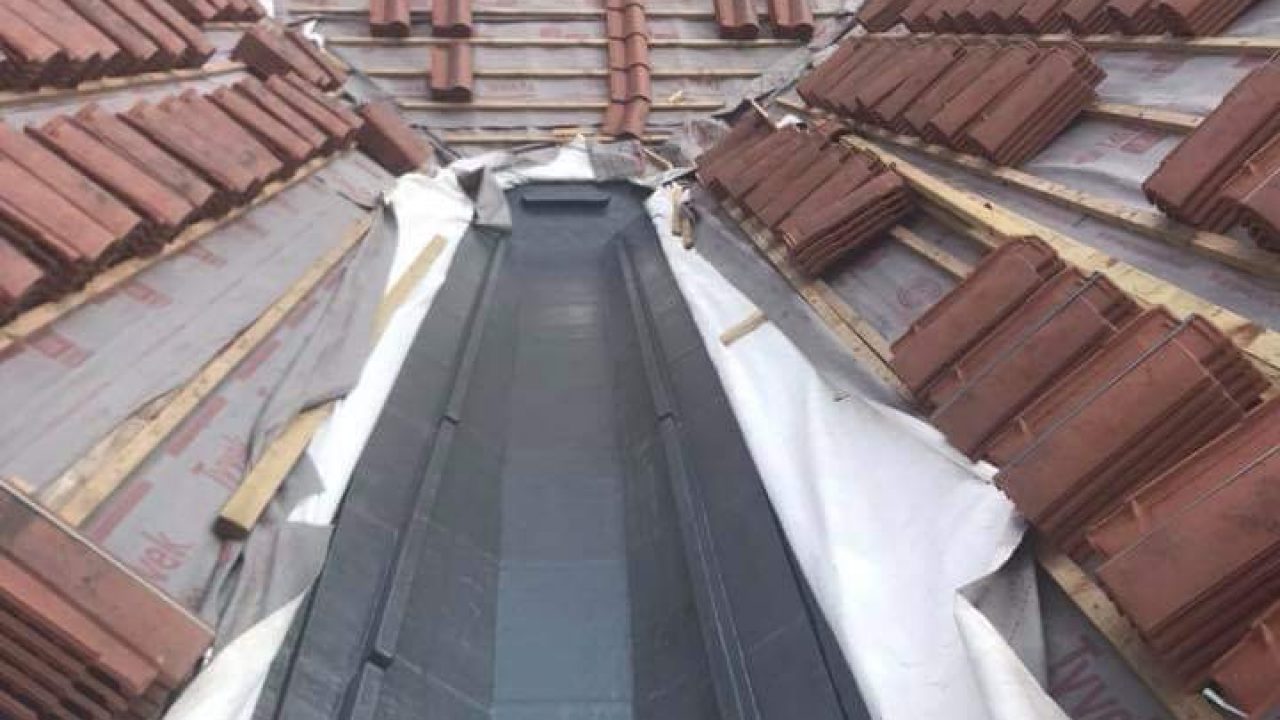

By considering fibreglass or felt for your roofing installations, you’re definitely asking the right question. They both are the definitely the most popular system for flat roofs, by far! But which one should you choose? Rather, which flat roofing system is most suitable for your home?
Let’s explore the two excellent systems, along with their benefits, advantages, disadvantages and facts, and you can decide which roofing installation system is best for your home.
The popularity for both systems come from different levels of requirements. With that said, Felt roofing installations is a much cheaper material, while Fibreglass roofing installations are more expensive. There is a great explanation for this, Felt roofing installations usually last less than 10 years, while Fibreglass roofing installations last for over 20 years.
Both Fibreglass roofing systems and Felt roofing systems undoubtedly have benefits, there are significant key differences between them. Let’s take a closer look.
Felt Roofing Systems
Felt roofing systems are known to be cheaper than other roofing systems, they are highly effective and are easy to replace. Traditionally felt is a flat roofing system. Felt roofing is impermeable, if installed correctly. Felt roofing systems have been used for over 50 years within the roofing industry, though the membrane itself has changed slightly over those years, it largely remains a product made from a material called bitumen (asphalt or coal-tar pitch).
There are so many benefits of deciding to use Felt Roofing systems, no doubt. Some of the most attractive benefits of using Felt Roofing systems are, well firstly, it’s low cost. Whilst it’s low cost, Felt Roofing systems are good performing, efficient and highly effective. On average, roof felt is much cheaper than newer roofing systems like fibreglass roofing systems, and felt roofing systems offer performance that is comparable when installed properly. It is also quick and easy to install, and this is also the case for replacements if needed. You’ll want to choose an installer than is highly professional and experienced to get the most out of your felt roofing construction.
Felt roofing systems are also easy to transport and pliable. Felt roofing systems are incredibly pliable actually, and are very easily manipulated which makes it an easy material to work with. As Felt roofing systems are rolled up in transport, this means that a van is often all that you’ll need to get the job done.
The downfall of felt roofing systems are it’s lifespan. Typical felt roofing systems will last under 10 years, more specifically they will last 5-8 years. Felt roofing systems lifespan of course depends on many variables, such as the weather, maintenance and it’s environment.
Did you know that felt roofing systems have a 3-layer membrane system? This new 3-layer membrane system is much superior to the bitumen and stone chip system from the past. The 3-layer membrane system uses a system of underlay, waterproof membrane and polyester to offer the perfect finish and most importantly – an amazing waterproofing performance.
Fibreglass Roofing Systems
Fibreglass roofing systems are known to be durable, have excellent longevity and high performance.
While Fibreglass roofs are a newer edition to the roofing industry, they have a greater life expectancy of roughly 20-30 years. Fibreglass roofing systems lend themselves best to flat roof types but are also suitable for pitched roofs, this is assessed as consultation on a property by property basis. Fibreglass roofing systems are way more durable that other roofing systems, they are stronger too and because fibreglass roofing systems have NO seams, it’s much less likely to fail as a roofing system and let water in, causing water damage, ponding and leaking. Fibreglass roofing installations are relatively easy for the professionals to not only install, but repair if your roof becomes damaged.
Fibreglass roofing systems will last you for more than 20 years, maybe 30 years, if it’s well maintained, cleaned and looked after. Fibreglass roofs are also much less likely than felt roofs to develop a fault and become damaged because it has no seams, in which case fibreglass roofs are much easier to repair and this means that issue can be quickly identified and nullified by a professional.
Fibreglass roofing is prefabricated, meaning that it comes from the factory pre-cut, which allows for quick installation. There is also no wastage whatsoever with fibreglass roofing installations, this reduces runs to the skip – the dreaded job – and the expense of a skip at your home. With a no wastage perk of fibreglass roofs, this also means that fibreglass roofs are more environmentally friendly compared to felt roofs, which are not widely recycled.
Fibreglass roofing system has a downfall – it’s price. Compared to felt roofs, the cost of a fibreglass roof is much more expensive, however worth it – due to it’s quality and longevity.
Did you know that fibreglass roofing systems manufactured in the UK and Europe use a compound called corrosion resistant laminates and fire-retardant resins? High quality fibreglass is therefore one of the most heat and chemically resistant roofing materials on the market today in the roofing industry, making another of fibreglass roofs benefits it’s safety.
Is a Fibreglass or Felt Roofing System right for me?
This is a matter of personal and preference and property set up/requirements.
Equally, fibreglass roofing and felt roofing are waterproof. So they both tick the box here. However fibreglass roofing systems have a much longer life span and are the stronger of the two options.
If you live in a region with adverse or severe weather conditions, intense rainfall, wind or snow, then a fibreglass roof system is going to be a much better choice for you. If you want to get a longer life span out of your roofing system, then fibreglass is the right choice for you. If you are on a tight budget then you might want to consider felt.
Speak to an experienced roofer or for any questions reach out to our experienced team at [email protected] for a chat or consultation.
